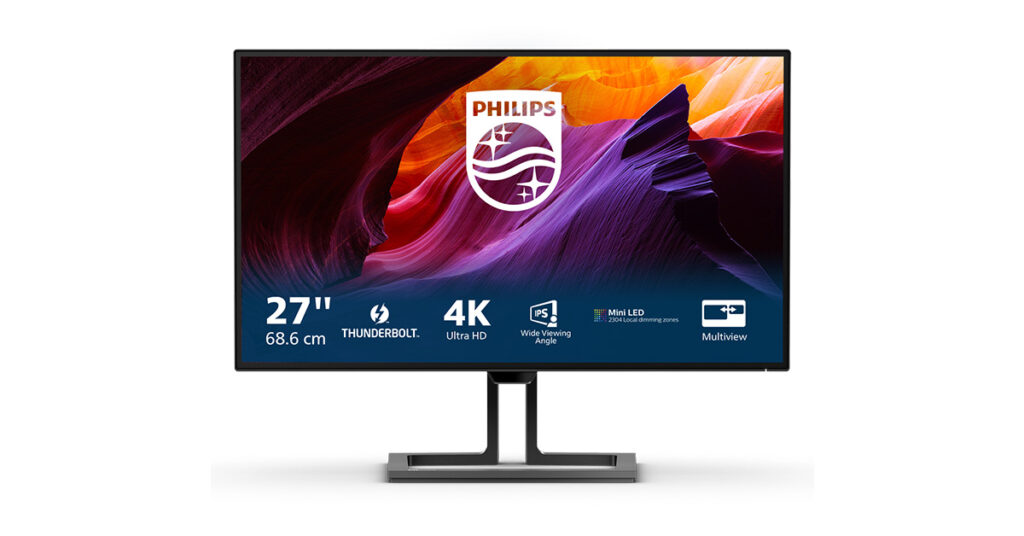Thunderbolt 4 port: Everything You Need to Know

Innovations such as the Thunderbolt™ 4 technology are timeless: It is explicitly made to simplify the connection from multiple devices to a single computer.
Thunderbolt™ technology was first developed by Intel in 2011 and it combined a single cable DisplayPort and PCI Express technologies with an aim to drive high-resolution displays and high-speed data transfers.
A couple of generations later, in 2020, the Thunderbolt™ 4 technology provided lightning-fast bidirectional 40 Gbps data transfer speeds and supplied high-resolution video, multi-stream transport for daisy chaining, up to 90W power delivery for devices, and a stable 1 Gbit/s Ethernet connection… all through a single cable.
So, want to know more about this innovative Thunderbolt™ 4 solution? In the sections below, we will cover the benefits, if it provides power delivery, and how it compares to other connections like USB-C.
What are the benefits of Thunderbolt ports?
Thunderbolt™ 4 is quite a must-have if you plan to connect multiple monitors/ accessories, daisy-chain monitors, or simply transfer large amounts of data. In addition, it allows users to connect their computers to external GPUs, storage drives, and PCIe enclosures. Moreover, Thunderbolt™ 4 has faster transfer speeds when compared to other connectivity options.
Philips 27B1U7903: A Thunderbolt™ 4-equipped monitor ideal for visuals
Specifically designed to answer the needs of architects, video makers, and photographers, Philips 27B1U7903 offers the picture performance of a Mini LED backlit and DisplayHDR™ 1400 certified display while also including all the benefits of Thunderbolt™ 4: lightning-fast 40 Gbps data transfer speeds, high-resolution video, multi-stream transport for daisy chaining, up to 90W power delivery for devices, and a stable 1 Gbit/s Ethernet connection.
To see the Philips 27B1U7903’s full specifications, please visit the product page here.
What is the difference between Thunderbolt and USB-C?
The main difference between Thunderbolt™ and USB-C is speed. For example, Thunderbolt™ 4 devices can transfer data at a rate of up to 40 Gbps, whereas the fastest USB-C connection can only transfer data up to 20 Gbps. This speed is ideal for those who need to transfer large amounts of information at high resolution. You can do the same with a USB-C connection, but with a Thunderbolt™ 4 port, you can transfer high-quality data faster and easier.
Therefore, Thunderbolt™ 4 and USB-C are not synonymous. The truth is, however, that Thunderbolt™ ports are compatible with USB-C devices, but they will only be used at the USB-C speed listed for the device’s specifications.
What is the difference between Thunderbolt and Thunderbolt 4?
In comparison to its predecessor (Thunderbolt™ 3), the Thunderbolt™4 doubles the minimum video and data requirements and includes added support for dual 4K displays (at 60 Hz) by using the DisplayPort 1.4 protocol and it is USB4 specification.
Do all Thunderbolt 4 ports support power delivery?
Yes, Thunderbolt™ 4 ports are able to support power delivery, however, your connected device must be compatible with Thunderbolt ™ technology.
To go into more detail, Intel mandates all Thunderbolt™ 4 ports provide at least 15W for faster charging of supporting devices. The main question, therefore, should be whether the laptop in use is compatible with Thunderbolt™ 4 power delivery capabilities: these are not universal to all laptops or monitors.
To provide an example, one monitor that provides power delivery to external devices is the Philips 27B1U7903: It also includes up to 90W power delivery for devices, but please also check official manufacturer specifications for complete details on compatibility at wattage. To see the Philips 27B1U7903’s full specifications, please visit the product page here.
In conclusion, the Thunderbolt™ 4 port is a great solution for your workspace. Apart from speeding up data transfer, it offers many other benefits that aid you in making your work better, more productive, and most importantly, more efficient.
